Sometimes you may need a way to remove things from the Google search results.
For example, if you just deleted a page and don’t want it to show up anymore. Or if you want to remove low-quality pages from the index for SEO reasons.
Here are the three best ways to remove one or many URLs from Google search.
Method 1: Use Google Search Console
It’s easy to remove URLs belonging to a website you own using Google Search Console.
If you haven’t already, then you need to start by submitting and verifying your site.
Google Search Console really is a must-have tool for managing your site’s appearance and performance in search.
Here’s how to remove a URL using Google Search Console:
- Visit the Remove URLs tool here: https://www.google.com/webmasters/tools/url-removal
- Select your website under “Please select a property”
- Click the grey button, enter your URL and click “Continue”
- Click “Submit Request”
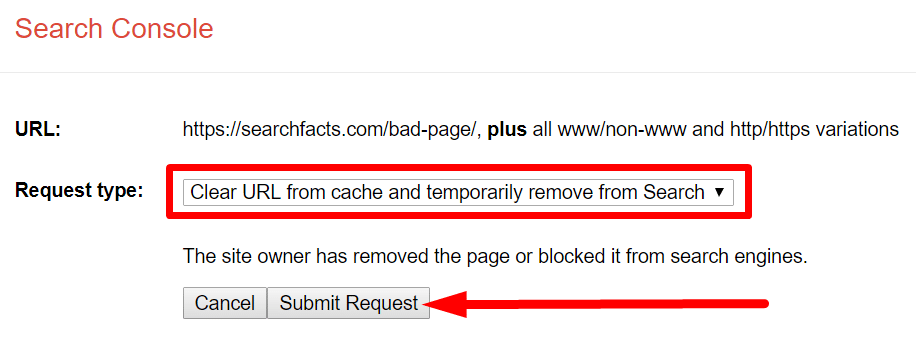
This will remove the URL from Google search for about 90 days. It will also remove the URL from Google’s cache.
Your URL should show as “Pending” for removal, but you can easily cancel your request by clicking “Cancel.”
Keep in mind that this method is only temporary! If the URL is still live on your site after 90 days, then Google will probably add it back to the index and start showing it in the search results again.
To permanently remove a URL, use method #2 or #3.
Method 2: Use the noindex meta tag
The noindex meta tag is the most commonly used way to remove URLs from search results, or to prevent them from getting indexed in the first place.
This is a small code snippet in the head section of the HTML of your site. It tells Google and other search engines not to show the page in search.
Here’s what it looks like:
<meta name="robots" content="noindex" />Sometimes it says “noindex, follow” instead of just “noindex” — both will have the same effects.
You can add this code manually to your website if you have access to the HTML code.
But if you use a content management system like WordPress, then most good SEO plugins provide options to noindex individual posts and pages.
Here’s how the option looks in Yoast SEO, which is the most commonly used WordPress SEO plugin.
Under “Allow search engines to show this Post in the search results?” — change from “Default” to “No” — this will add the noindex meta tag to the head section.
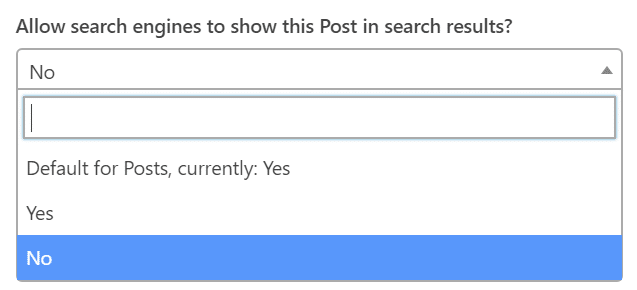
If you add the noindex tag to web pages, then they should disappear from search the next time the search engine robot visits them.
However, noindexed URLs can sometimes take a while (days or even weeks) to drop out of the search results.
If you want to speed things up, then Google’s outdated content removal tool is the best way to get a noindexed or deleted URL removed as fast as possible.
As long as the noindex tag is present on the pages, then they should not show up in the search results again unless if the tag is removed.
The noindex meta tag will also remove the pages from other search engines, including Bing and Yahoo.
You can also add noindex to your entire website to remove all of your pages from search engines.
This can be done by going into the WordPress dashboard –> Settings –> Reading. Then check the box that says “Discourage search engines from indexing this site.”
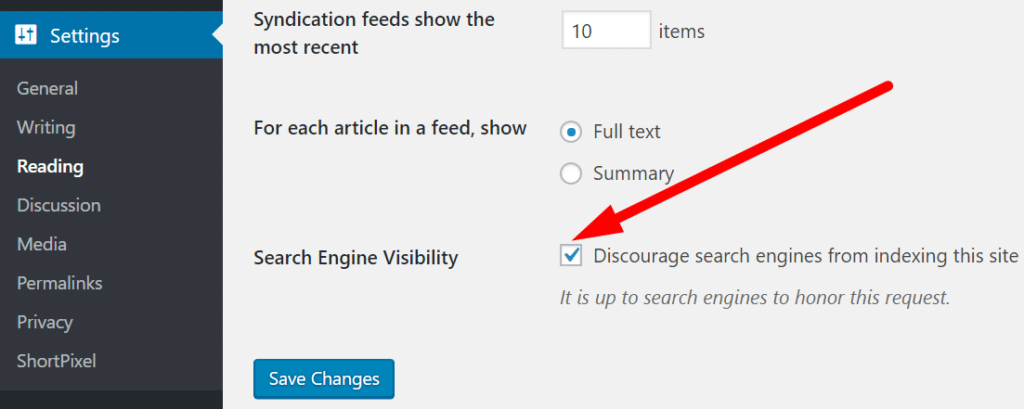
This is useful when you have a new site and don’t want anyone to see it yet. But don’t use it on a live site unless you are willing to lose all of your search traffic.
Method 3: Delete the URL
If the URL you want to remove doesn’t serve any purpose, then you can simply delete it from your site.
This will make it return a 404 (Not Found) or 410 (Gone) error.
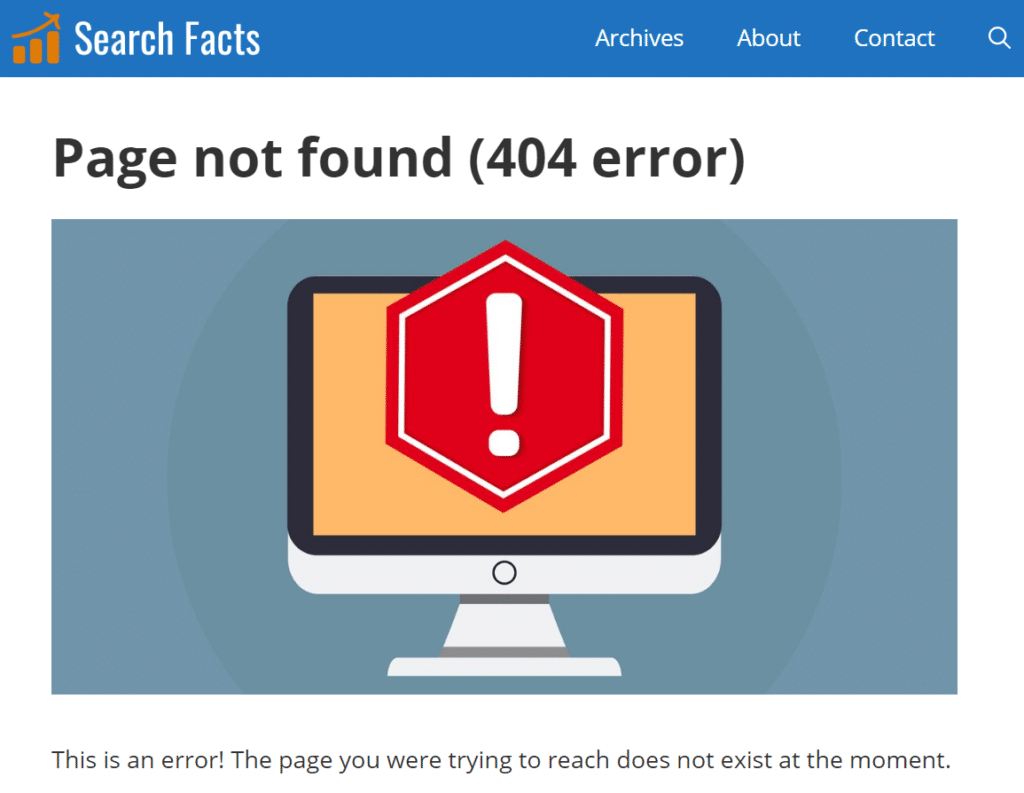
Googlebot will try to crawl the URL again soon and remove it from the index when it sees the 404 or 410 error.
Sometimes, the page you want to remove may have steady traffic or inbound links that provide SEO value.
In that case, it may be better for user experience and SEO to use a 301 redirect to redirect your users and search engine bots to a closely related page.
You can create 301 redirects in WordPress with the free Redirection plugin.
Don’t count on robots.txt
Robots.txt is a file located on your root domain (example.com/robots.txt) that tells search engine robots what they can not access.
For example, you can use it to instruct Googlebot to completely stay away from your site using disallow all.
However, it is not always a good idea to rely on robots.txt to block URLs from showing up in the search results.
If someone links to a URL, but it’s blocked by robots.txt, then it may still show up in Google.
Instead of showing a description, the search snippet will say, “A description for this result is not available be cause of this site’s robots.txt.” But the page will still be indexed.
If this happens, it is better to allow Google to crawl the URLs but instead use the noindex tag (method 2) to keep them out of the search results.
How to remove an entire website from Google
The best way to remove an entire website from Google is to add the noindex tag to every single page on the site.
You can also use a free plugin to block the entire site with a password. This should prevent your pages from getting indexed in Google search.
In addition, you can block your site from being crawled by search engine robots by adding this to your robots.txt file:
User-agent: *
Disallow: /How to remove URLs from sites you don’t own
It is much harder to remove URLs from Google if they don’t belong to a site that you control.
However, if someone has copied your content, then you may be able to get Google to remove it by filing a DMCA takedown request.
It is best to start by submitting the DMCA request to the web hosting company of the website that is hosting your copied content. Then they will be forced to take it down.
But you can also submit a DMCA request directly to Google using this tool.
In addition, Google has made a detailed guide about removing third-party content on this page.
But unless there is a proper legal reason for it, then it will usually be impossible. Your best course of action may be to contact the webmaster directly to ask for removal.
What about Bing and Yahoo?
If you have added and verified your site in Bing Webmaster Tools (instructions here), then you can use it to remove URLs from both Bing and Yahoo.
Log in to the tool, go to “Configure My Site” -> “Block URLs.” Then Enter your URL and click “Block URLs and Cache.”
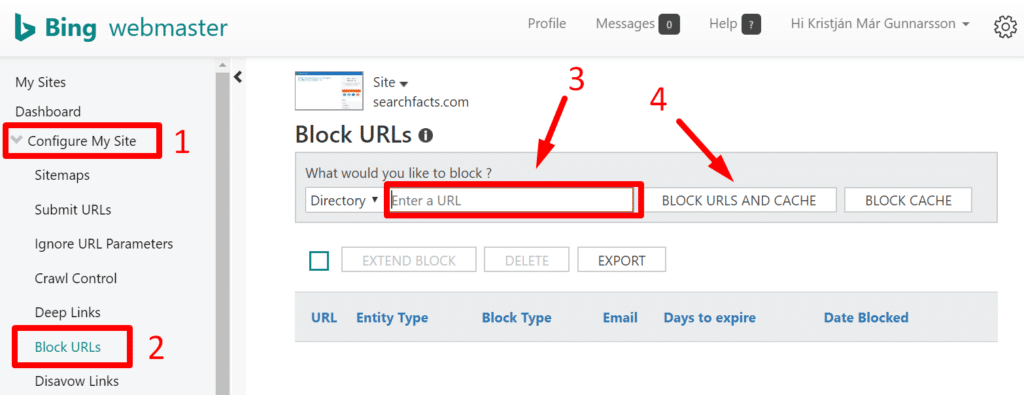
This tool works similarly to Google’s URL removal tool. It is also just temporary, removing URLs for about 90 days.
If you want to remove the URLs permanently, then the noindex tag is the best way to do it.